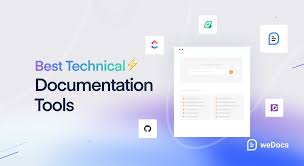In the contemporary busy software development environment, it may be significant to maintain documentation between two or more versions of a product. New features, updates, and interface redesign normally lead to gaps or old information. Here, automated documentation tools are critical as they allow the ease of managing content and being accurate with all releases. Using applications such as Dr.Explain, teams can create, update, and administer documentation easily while retaining a consistent architecture and tone.
What is the importance of consistency in Documentation?
Consistency guarantees that users are assured of all-time valid, understandable information, notwithstanding the version of a product that they may be using. Lack of consistency in documentation will result in confusion, time waste, and frustration for users and support teams. Regular documentation, conversely, creates confidence and trust in the product in the minds of users. It also assists developers and technical writers to be in the same communication style, which is very crucial in brand credibility and usability.
What is the Relationship Between Automated Documentation Tools and Version control?
Automated documentation tools also make version control less challenging since the team in question is able to control and monitor the changes in a single centralized solution. These tools automatically point out changes between versions, instead of the need to do the comparisons manually or rewrite the sections. They help technical writers to coordinate new aspects or changes across multiple documents without failure. Ensuring that there is one source of truth helps teams to correct and publish their changes fast without fear of overlooking key information. This automation is used to make sure that all the versions of the documentation are correct and updated.
What Is the Way of How Do These Tools Minimize Human Flaws?
Updating manual documentation can be easily affected by human error, including old screenshots, a lack of instructions, or an irregular structure. Automated tools reduce many of these problems by standardizing templates, updating that is automated as well as tying content to dynamically evolving sources of data. An example would be in the case of a change in a product interface, automated tools would be able to identify and propose changes to the corresponding documentation. This saves time on manual work, and the chances of inaccuracy are minimized since all versions are given the latest and most appropriate information.
read more : The Science Behind Every Successful Kilimanjaro Climb
What is the Way to preserve Visual and Structural Uniformity by Automation?
The uniformity is concerned not only with the content but also with the presentation. Automation of documentation tools enables the teams to use templates, fonts, color schemes, and layout styles in all the documents. This makes all guides, help pages, and manuals to be designed in the same format. It does away with the contradictions brought by the work of several authors on the same parts. The outcome is a well-edited and unified set of documentation, which is professional and user-friendly to read and follow, irrespective of the version.
What Are the Collaboration Supporting Functions of Automated Tools?
In such a huge team, several writers and creators can collaborate on the same documentation project. Automated documentation systems enable real-time cooperation since they enable simultaneous editing and versioning as well as controlled access. The members of the team are able to comment and review as well as approve changes before publication, which will guarantee publication of only confirmed information. This team effort also ensures that there is consistency as well as more productivity, as far as duplication of efforts and communication gaps between the members of the team are minimized.
What Can Dr.Explain Do to Improve Version Consistency?
Dr.Explain is an excellent automated documentation system that assists teams in simplifying updates, controlling versions, and preserving accuracy. It has an intuitive interface and intelligent synchronization capabilities so that all documents are in sync with the most recent product updates, and the user has to spend less time on the modifications and on the overall user experience.
To sum up, automated documentation tools have transformed the way companies can cope with documentation changes and control their versions. They minimize mistakes, ensure structural consistency, and collaborate within teams. Using automation in a documentation process, businesses will be able to provide high-quality and consistent information each time. With the help of such sophisticated systems as Dr.Explain, you can be sure that the documentation will develop together with your product, to make sure that your users are informed, involved, and confident.



